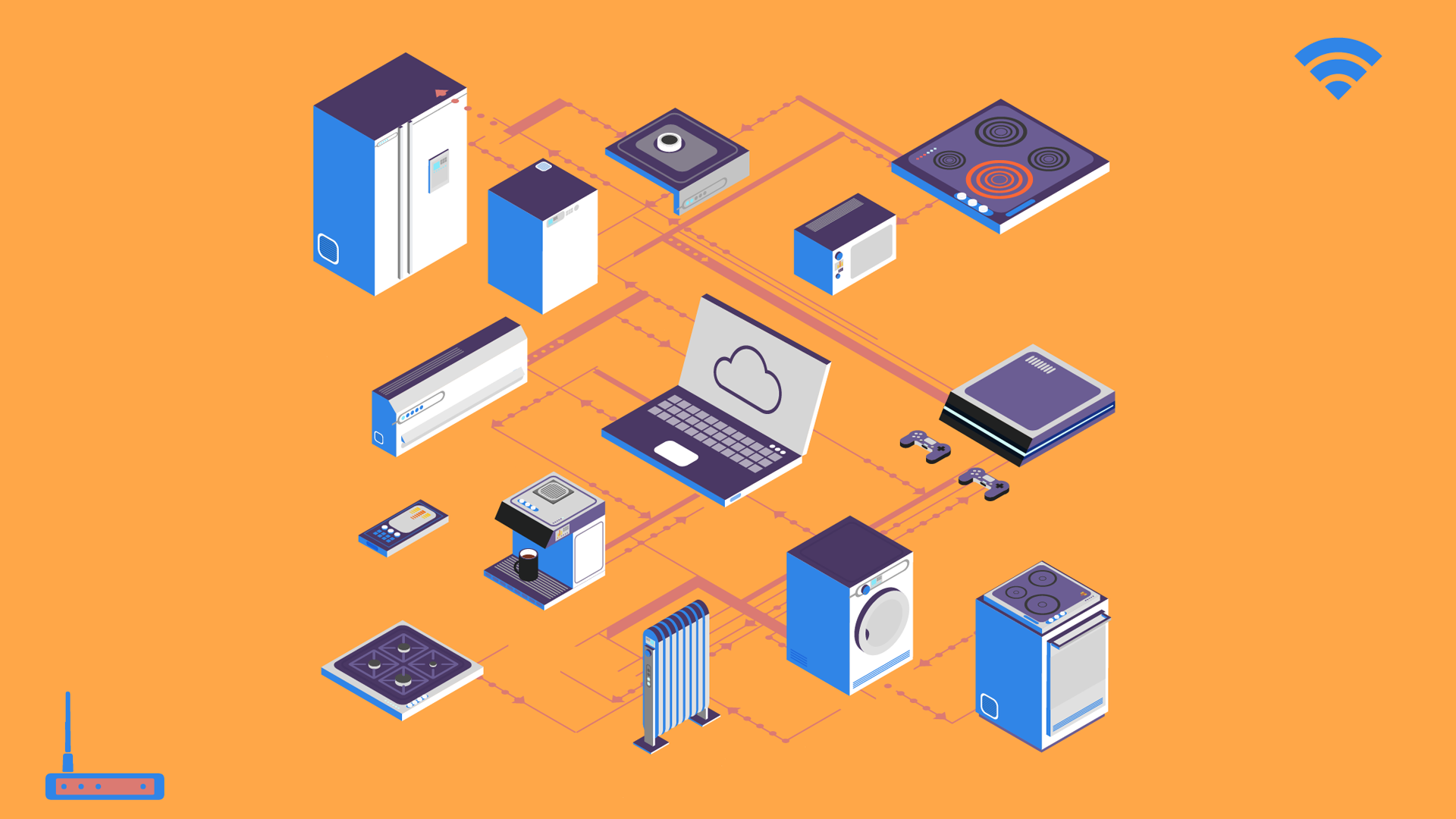Mastering IoT SSH Control: The Ultimate Guide For Tech Enthusiasts
Hey there, tech-savvy friend! Ever wondered how to take full control of your IoT devices using SSH? Let’s dive into the world of IoT SSH control and uncover its secrets. Whether you’re a beginner or an advanced user, this guide will help you unlock the power of secure remote access for your smart devices. So, buckle up because we’re about to embark on a tech-savvy adventure!
Let’s face it, the Internet of Things (IoT) is everywhere. From smart fridges to home security systems, IoT devices are revolutionizing the way we live. But with great power comes great responsibility, right? That’s where IoT SSH control comes in. Secure Shell (SSH) is your golden ticket to managing these devices from anywhere in the world. It’s like having a remote control for your entire smart home setup.
Now, you might be thinking, “Why should I bother with SSH when there are so many apps out there?” Well, my friend, SSH offers unmatched security and flexibility. It’s not just about convenience; it’s about safeguarding your devices from prying eyes. In today’s digital age, security is king, and SSH is your crown.
- Cameron Brink Mother The Story Behind The Scenes
- Who Is Kristi Noems Children The Surprising Truth You Need To Know
What Exactly is IoT SSH Control?
Alright, let’s break it down. IoT SSH control is essentially using Secure Shell to manage and interact with your Internet of Things devices remotely. Think of SSH as a secure tunnel that lets you access your devices over the internet without exposing them to potential threats. It’s like having a secret handshake with your gadgets.
SSH was originally designed for remote server management, but its versatility makes it perfect for IoT devices too. Whether you’re troubleshooting a smart thermostat or updating the firmware on a security camera, SSH has got you covered. Plus, it’s free and open-source, which means no pesky subscription fees.
Why Choose SSH Over Other Protocols?
Here’s the deal: while there are plenty of protocols out there, SSH stands out for a few key reasons:
- Timeshealthmag Fitness Your Ultimate Guide To Staying Fit And Healthy
- Why Vegamovies 20 Is The Ultimate Streaming Experience Yoursquove Been Waiting For
- Security: SSH encrypts all data transmitted between your device and the remote server, making it nearly impossible for hackers to intercept.
- Reliability: SSH connections are rock-solid, even in unstable network conditions. You won’t have to worry about dropped connections or corrupted data.
- Flexibility: SSH supports a wide range of commands and scripts, giving you full control over your devices. Need to run a complex script? SSH can handle it.
So, if you’re looking for a secure, reliable, and flexible way to manage your IoT devices, SSH is the way to go.
Getting Started with IoT SSH Control
Ready to jump in? Great! Here’s a step-by-step guide to help you get started with IoT SSH control:
First things first, you’ll need an IoT device that supports SSH. Most modern smart devices come with SSH capabilities, but it’s always a good idea to check the specs. Once you’ve got your device, here’s what you need to do:
Step 1: Enable SSH on Your Device
This step varies depending on the device, but generally, you’ll need to:
- Access the device’s settings menu.
- Look for an option labeled “SSH” or “Remote Access.”
- Enable SSH and take note of the device’s IP address.
Don’t worry if this sounds intimidating. Most devices have detailed instructions in their user manuals or online support forums.
Step 2: Install an SSH Client
Next, you’ll need an SSH client on your computer or mobile device. Some popular options include:
- Putty (Windows)
- Terminal (Mac)
- Termius (iOS/Android)
Once you’ve installed your chosen client, you’re ready to move on to the next step.
Setting Up a Secure Connection
Now that you’ve got everything set up, it’s time to establish a secure connection. Here’s how:
Step 3: Connect to Your Device
Open your SSH client and enter the device’s IP address. You’ll also need to provide a username and password. If this is your first time connecting, you might be prompted to accept the device’s key. Just say yes and you’re good to go.
Once connected, you’ll have full access to your device’s command line interface. From here, you can run commands, transfer files, and even update software. It’s like having a superpower for your smart home.
Tips and Tricks for Mastering IoT SSH Control
Now that you’ve got the basics down, let’s talk about some advanced tips to take your IoT SSH control skills to the next level:
Tip 1: Use Public Key Authentication
Instead of relying on passwords, consider using public key authentication. This method generates a pair of keys – one public and one private – that are used to authenticate your connection. It’s more secure and eliminates the need to remember complex passwords.
Tip 2: Set Up Port Forwarding
If you want to access your devices from outside your local network, you’ll need to set up port forwarding on your router. This allows incoming SSH connections to reach your device. Just be sure to use a non-standard port to avoid attracting unwanted attention.
Tip 3: Automate Tasks with Scripts
SSH isn’t just for manual commands. You can write scripts to automate repetitive tasks, such as backups or firmware updates. This saves you time and ensures your devices are always up to date.
Common Challenges and How to Overcome Them
Let’s face it, no technology is perfect. Here are some common challenges you might encounter with IoT SSH control and how to overcome them:
Challenge 1: Connection Issues
If you’re having trouble connecting to your device, double-check the IP address and make sure SSH is enabled. Also, ensure your router’s firewall isn’t blocking the connection.
Challenge 2: Security Concerns
While SSH is secure, it’s not foolproof. To minimize risks, use strong passwords, enable two-factor authentication, and keep your software up to date.
Real-World Applications of IoT SSH Control
So, how can you apply IoT SSH control in real life? Here are a few examples:
- Monitor and control smart home devices from anywhere in the world.
- Remotely manage industrial IoT devices in factories or warehouses.
- Perform maintenance and troubleshooting on remote servers.
The possibilities are endless. Whether you’re a homeowner or a business owner, IoT SSH control can help you streamline operations and save time.
Security Best Practices for IoT SSH Control
Security should always be a top priority when working with IoT devices. Here are some best practices to keep your setup safe:
Practice 1: Regularly Update Firmware
Keep your device’s firmware up to date to protect against vulnerabilities. Manufacturers frequently release updates to address security issues.
Practice 2: Use Strong Passwords
Avoid using easily guessable passwords like “123456” or “password.” Instead, opt for complex combinations of letters, numbers, and symbols.
Practice 3: Limit Access
Restrict SSH access to trusted users only. You can do this by configuring your router or using SSH’s built-in access control features.
Future Trends in IoT SSH Control
As technology continues to evolve, so does IoT SSH control. Here are a few trends to watch out for:
- AI Integration: Expect to see more AI-powered tools that enhance SSH functionality and security.
- Quantum Encryption: As quantum computing becomes more mainstream, we may see new encryption methods that make SSH even more secure.
- Edge Computing: With the rise of edge computing, devices will be able to process data locally, reducing latency and improving performance.
Stay tuned for these exciting developments and keep pushing the boundaries of what’s possible with IoT SSH control.
Conclusion: Take Control of Your IoT Devices Today!
There you have it, folks – the ultimate guide to mastering IoT SSH control. By following the steps outlined in this article, you can take full control of your smart devices and enjoy the peace of mind that comes with knowing your setup is secure.
So, what are you waiting for? Grab your SSH client, fire up your devices, and start exploring the possibilities. And don’t forget to share your experiences in the comments below. We’d love to hear how you’re using IoT SSH control to enhance your tech life!
Oh, and one last thing – if you found this article helpful, be sure to check out our other guides on all things tech. There’s always more to learn, and we’re here to help you every step of the way. Happy hacking!
Table of Contents
- What Exactly is IoT SSH Control?
- Why Choose SSH Over Other Protocols?
- Getting Started with IoT SSH Control
- Setting Up a Secure Connection
- Tips and Tricks for Mastering IoT SSH Control
- Common Challenges and How to Overcome Them
- Real-World Applications of IoT SSH Control
- Security Best Practices for IoT SSH Control
- Future Trends in IoT SSH Control
- Conclusion: Take Control of Your IoT Devices Today!



Detail Author:
- Name : Dr. Bailey Robel II
- Username : wolf.marcelle
- Email : xander.thompson@erdman.com
- Birthdate : 1988-04-04
- Address : 22294 Baumbach Field Apt. 831 Lake Candice, MS 01543-3155
- Phone : 1-520-928-4763
- Company : Gutkowski, Marks and Gulgowski
- Job : Survey Researcher
- Bio : Incidunt sed quidem praesentium sed. Eius nesciunt vero quasi similique. Voluptatem iusto autem autem rerum ea quo.
Socials
linkedin:
- url : https://linkedin.com/in/daijalubowitz
- username : daijalubowitz
- bio : Ut repudiandae est aspernatur quod vitae.
- followers : 1808
- following : 1092
facebook:
- url : https://facebook.com/daija5786
- username : daija5786
- bio : Ratione deserunt saepe dignissimos porro.
- followers : 5791
- following : 1321
twitter:
- url : https://twitter.com/daija_dev
- username : daija_dev
- bio : Rerum illum facilis laudantium exercitationem. Dolor non sunt et nulla fugiat eos. Ea laudantium aliquid vel molestias sint. Incidunt qui quia in mollitia.
- followers : 1034
- following : 2848
tiktok:
- url : https://tiktok.com/@dlubowitz
- username : dlubowitz
- bio : Quod quas sed optio ut similique. Quis optio enim debitis.
- followers : 6213
- following : 2539
instagram:
- url : https://instagram.com/lubowitzd
- username : lubowitzd
- bio : Magni illum sunt illum voluptatem atque et quam. Sint voluptas aliquam voluptatem minus.
- followers : 383
- following : 1514